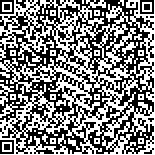钱开林,王彤.功能性电刺激治疗脑卒中后肩关节半脱位疗效观察[J].中华物理医学与康复杂志,2003,(1):。-
扫码阅读全文

|
| 功能性电刺激治疗脑卒中后肩关节半脱位疗效观察 |
|
| |
| DOI: |
| 中文关键词: 脑卒中 功能性电刺激 肩袖 三角肌 肩关节半脱位 |
| 英文关键词: Stroke Functional electric stimulation Shoulder subluxation Functional assessment |
| 基金项目: |
|
| 摘要点击次数: 2231 |
| 全文下载次数: 1748 |
| 中文摘要: |
| 目的观察功能性电刺激(FES)对脑卒中患者肩关节半脱位的短期和长期疗效。 方法将36例脑卒中后肩关节半脱位患者随机分为FES组和肩托组。FES组应用FES刺激患侧肩袖和三角肌,每日1次,每次20 min;肩托组只采用肩托保护。治疗前、治疗20 d后、治疗60 d后,分别摄取双侧肩关节X线片及进行指诊。对评测结果进行比较分析。 结果治疗前2组各项指标差异无显著性(P>0.05)。治疗20 d后,FES组肩关节半脱位复位率(52.6%)显著高于肩托组(17.6%)(P<0.001);而治疗60 d后,FES组复位率(84.2%)和肩托组(76.5%)接近(P>0.05)。 结论FES能够在短期内明显提高肩关节半脱位的复位率,但长期疗效和肩托治疗无显著性差异。 |
| 英文摘要: |
| Objective To observe the effect of functional electrical stimulation (FES ) on shoulder subluxation in stroke patient. MethodsThirty-six patients were randomly divided into 2 groups:the FES group and shoulder-support group. Patients in the former group were given FES of the rotator cuff and posterior deltoid for 20 min, twice a day, while patients in the later group were given shoulder support only. Parameters were analyzed before the start of and 20d, 60d after the therapy. ResultsTwenty days later, the rate of recovery of shoulder subluxation in FES group was significantly higher than that of shoulder support group (52.6% vs 17.6%, P<0.001), but became similar to that of the shoulder support group at 60 days later (P>0.05). ConclusionFES program can effectively improve the rate of recovery of subluxation in a short time, but showed no greater long-term benefit than the shoulder support. |
|
查看全文
查看/发表评论 下载PDF阅读器 |
| 关闭 |